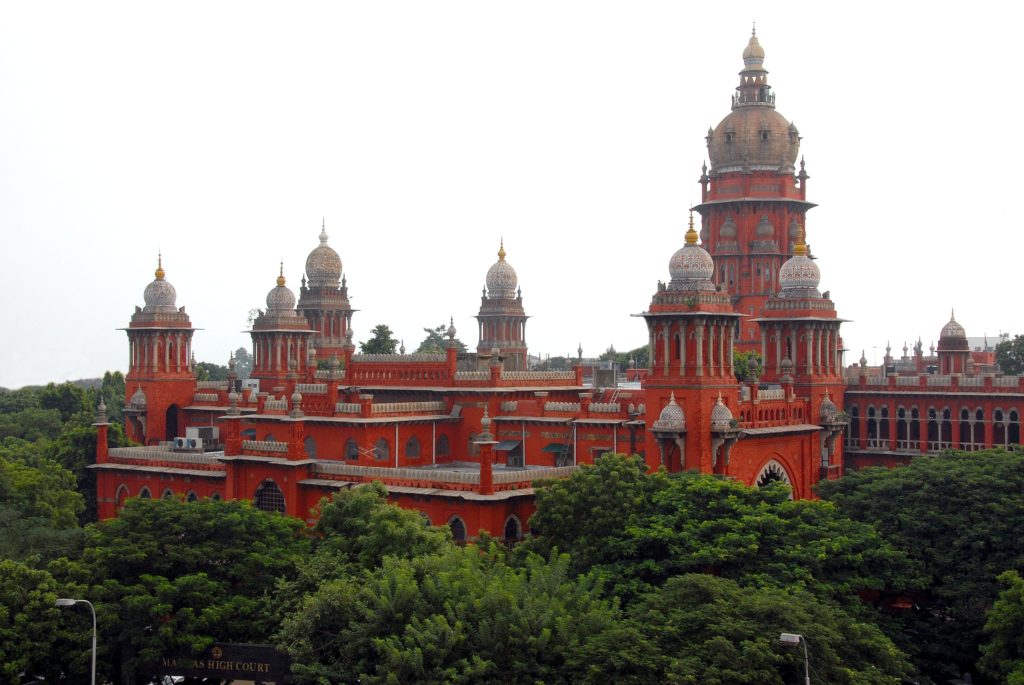THE ICONIC Thiruvarur ‘Aazhi Ther’ (Chariot) Festival – A grand spectacle of social harmony, Organized effort, vibrant youths, devotional fervor
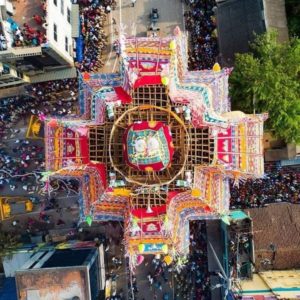
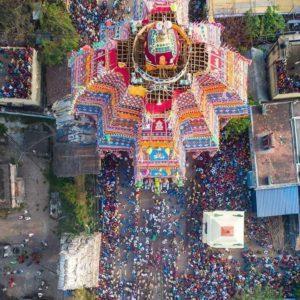
Thousands of devotees from across the world converged at Thiruvarur to witness the grand event — Aazhi Ther of Thyagarajaswamy temple, on 25th March 2021. They had come all the way just for a glimpse of Lord Thyagarajaswamy and His Consort seated in the chariot and also with the hope of getting a chance to pull the chariot holding the huge ropes about one foot in diameter and 500 m long.
It was indeed a rare sight to see the majestic chariot being pulled by thousands of devotees taking turns.
At the start the ropes were passed on over the shoulders of the devotees and when the chariot started moving they seem to have vanished into the hands of the devotees. All that one could witness was the sea of humanity pulling the Chariot.
The majestic ‘Aazhi Ther’ procession went around four main streets (Mada veethis) around the temple with the chant ‘Arooraa, Tyagesa’ by the devotees reverberating in the sky. The scholars were seen chanting the sacred Tamil hymns, Thevaram and the Vedas.
The entire cross section of the society across all castes, the rich and poor, men and women including children were seen participating with total devotion putting their shoulders together to pull the chariot of the divine Father of all beings. Absolute social harmony could be seen and even after sun set women were seen moving freely without any security concerns.
Biggest in Asia
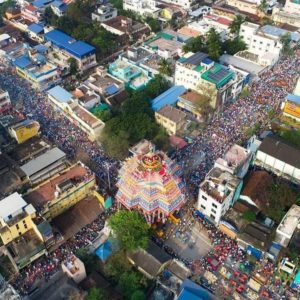
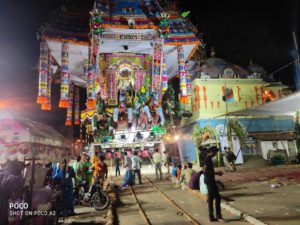 The Temple chariot of Thiruvarur, ‘Aazhi Ther’ is the biggest in Asia. The 30-ft tall temple car rises to 96 ft after decoration is completed with bamboo poles and colorful cloth. The kalasam alone accounting for 6 ft. The total weight of the chariot is a whopping 350 tonnes. The Chariot strode the temple streets with majesty. It was indeed a spectacle to see the chariot taking turn at the street corners.
The Temple chariot of Thiruvarur, ‘Aazhi Ther’ is the biggest in Asia. The 30-ft tall temple car rises to 96 ft after decoration is completed with bamboo poles and colorful cloth. The kalasam alone accounting for 6 ft. The total weight of the chariot is a whopping 350 tonnes. The Chariot strode the temple streets with majesty. It was indeed a spectacle to see the chariot taking turn at the street corners.
Event happening from Time Immemorial
The ‘Aazhi Ther’ event finds mention in the ancient Tamil epic Silappathikaram and also in the Thevaram hymns by the Saivite saints Appar, Sundarar, Manickavachagar and Thirugnanasambandar. References to ‘Aazhi ‘Ther’ festival in Tiruvarur are found in the Modi (Marathi language) scripts of the Thanjavur Mahratta Ruler Shahaji (1684-1712 AD) at the famous Saraswathi Mahal Library in Thanjavur. Documentary evidences are available in the library about the Tiruvarur Ther festival happening continuously since 1748 AD till the middle of 20th century.
Fire Accident and Daring act of bravery
During the event in the year 1926, fire that erupted from crackers that were burst on the route of the chariot caused fire. Muthu Kothanar, the chief and master craftsman, involved in the construction of the Tyagarajaswamy temple in 1920, showed tremendous presence of mind and courage. Caring little about his own safety, he climbed up the burning car and cut the ropes tied to the Panchaloha idol of Tyagarajaswamy. Using dhotis, he made a rope and pushed the idol from the chariot. The crowd, watching this with bated breath, caught the idol and carried it through the western Gopuram entrance of the temple. Generally, deities in the temple never enter through this entrance.
It took nearly four years to make the present temple car (‘Aazhi Ther’) with the original grandeur and it was run on March 2, 1930, according to inscriptions in the temple. The car festival was conducted without interruption till 1948 and was stopped for unknown reasons. In 1970, the then Tamil Nadu Government and industrialist Tiruvarur V.S. Thyagaraja Mudaliar took efforts and hydraulic wheels made by BHEL were provided. The festival was conducted till 1975. After a break, it was resumed in 1978 and was conducted in 1982 and stopped. It was resumed in 1988 due to the efforts of Hindu Munnani led by Shri Ramagoplanji, who was firm that the Temple Car should be manually pulled and not by bulldozer. For this he mobilized cross section of the people from Tiruvarur and adjoining areas.
‘Tiruvarur Therottam,’ as it is called, involves the same rituals and traditions associated with the Tyagarajaswamy temple. Lakhs assemble to catch the majestic sight of Veedhividangar with His consort ‘Kondi’ (Parvathi) in the grand ratham. The procession includes four more cars for Ganesa, Subramanya, Kamalambikai and Chandikeswarar, the entire Family returning to base in the evening.
The Hindu Temple Protection Committee Members along with the volunteers of Hindu Munnani were busy distributing variety of food (500 Kgs of food), bananas, milk, water etc.
Majestic dance procession of the Deity (Utsava Moorthi )
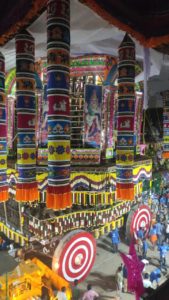
Among the many unique features of Hinduism, the different ways in which the devotees associate themselves with the deity is very noteworthy. After 10.30 p.m., on the same day, the Utsava Moorthi is brought down from the chariot by a group, who carry the deity on their shoulders along the steps. As they carry the deity with wooden boulders on their shoulders, they can be seen literally dancing with so much vigour that sends the devotees into ecstasy. Flowers are showered on the deity chanting ‘Arooraa, Thyagesa’. Here too, thousands of devotee’s throngs to have a glimpse of this event and to have dharshan of their beloved Lord.
This is but yet another annual temple festival in Tamilnadu that happens in a massive scale organized by the local community out of sheer love for the Lord reaffirming their Bhakti and faith in Vedic Dharma.
Tiruvarur, the city that is described only with superlatives wherever mentioned, has two chariots, one moving and the other frozen, a silent sentinel to centuries of bygone past. They are testimony to the legacy of this glorious land.
Every Hindu in his life time has to witness this iconic Temple Car festival.
|
Significant features of Thiruvarur Tyagarajaswamy Temple · Nobody knows how ancient the temple is. · No Abhishekam for the main deity. Abhishekam only to the Maragadha Lingam, which was worshiped by Lord Indra. · The Shiva Lingam is Swayambu Lingam · The temple is 1000 feet in length and 700 feet in width. · The pond of the temple (Kamalalayam) is also of the same dimension. · In all there are 9 Rajagopurams. The main Rajagopuram is 120 feet tall. · 80 Vimanas · 13 Big Mandapams · More than 100 Sannadhis · 24 small temples within the temple walls · Temple surrounded by 30 feet walls
|

